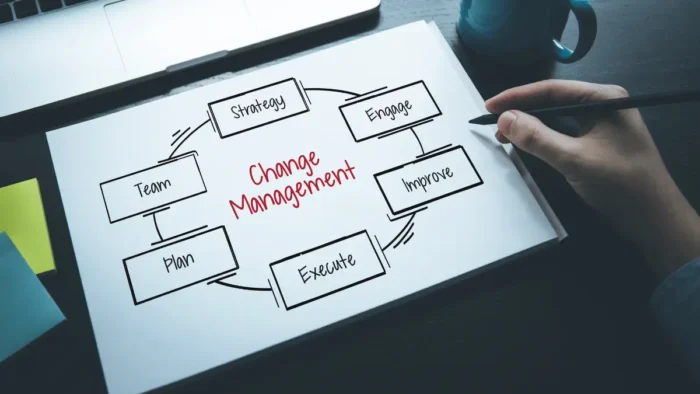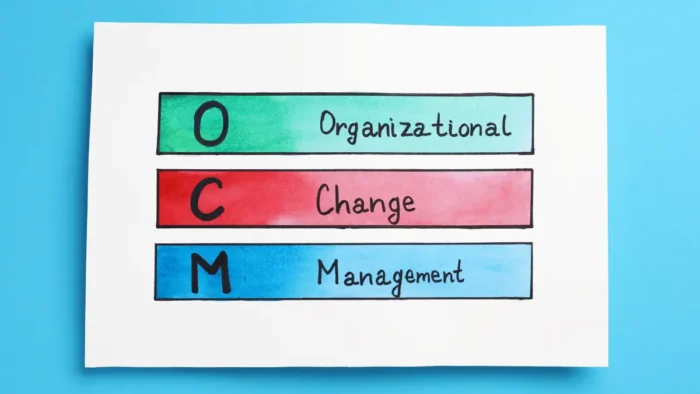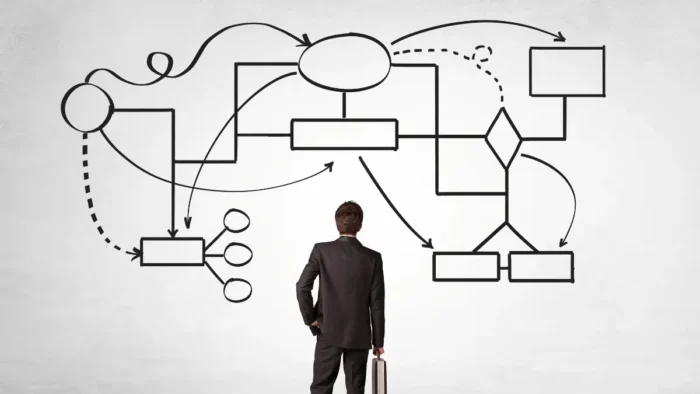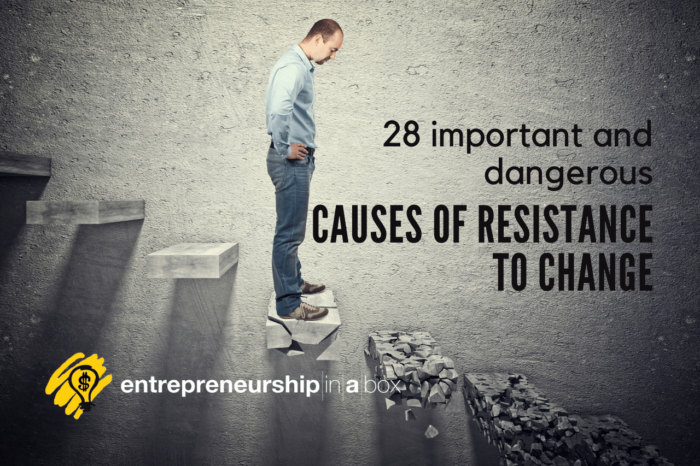Change is a constant force in every organization, whether a business, a larger corporation, or a public administration. After covering two different change models, the diagnostic model of organizational change and Kotter’s 8-step change model, another important model that has resisted the test of time is Lewin’s change management model.
You must understand Lewin’s change model because it is crucial when addressing organizational change needs. This model simplifies the change process into three stages: unfreezing, changing, and refreezing. Thus, it provides a clear path for implementing and managing change.
This article explores how each stage functions within Lewin’s framework and details the practical steps necessary for successful practical implementation.
📖 Key Takeaways
- Lewin’s change management model includes three basic steps: unfreezing, changing, and refreezing. These, or better said, stages instead of steps, can help your organization prepare for, implement, and make a change to stick.
- Leadership is essential in managing change because it creates a sense of urgency, effectively communicates the change vision, and involves employees throughout the whole transformation process in order to overcome resistance and inertia.
- Even with a structured approach like Lewin’s model, many organizations face challenges when implementing the change process, which requires clear communication, employee involvement, and agile decision-making.
Explanation of Lewin’s Change Management Model
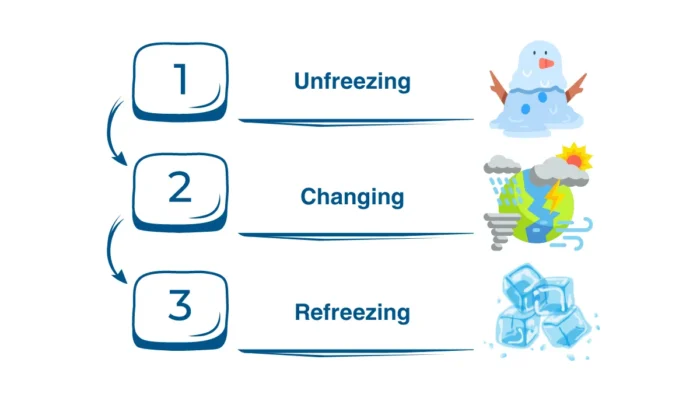
The renowned psychologist Kurt Lewin was the first person to offer a clear and specific model for the change process from the current state to a new, desired state in the future. His model is the product of research he conducted during World War II to change the feeding habits of individuals in wartime conditions that required cheaper food. After four years of research and analysis, Lewin concluded that to implement changes successfully, one must follow his change theory, which we will describe in this article.
The Genesis of Lewin’s Model
Kurt Lewin, also recognized as the “father of social psychology,” introduced his change management model in the mid-20th century. This change model soon became a cornerstone in understanding the complexity of the organizational change process. Since then, many organizations worldwide have used Lewin’s model to manage radical or transformational change, highlighting its lasting relevance in today’s organizations.
As I already mentioned at the beginning, Lewin’s theory for organizational change breaks down the change process into three stages: unfreezing, change, and refreezing. Each plays a key role in managing and implementing successful change initiatives.
Kurt Lewin’s Force Field Theory
The model is based on Lewin’s force field theory, which states that every individual’s behavior is based on an equilibrium between driving forces and resistance forces. The idea comes from the physical concept of the magnetic field.
Change as an organizational transition represents a movement from the current state to a new desired state of the organization. The force field theory assumes that individuals’ behavior in that process is at equilibrium between driving and resistance forces.
Driving forces support change or increase the likelihood that change will occur while resisting forces oppose change. The driving forces are directed toward a desired future state, and the resistance forces are directed toward maintaining the existing state (status quo). The picture below shows this equilibrium, which maintains the status quo situation.

If these two forces are equal or the driving forces are weaker than the resistance forces, the change will not occur. The arrows that touch the current state line on both sides represent the balance of both forces. Each force is evaluated in two ways: by its strength and flexibility regarding change.
We must note that this model can be considered at the individual, group, and organizational levels. The individual level is when the individual has reasons (forces) for certain changes in work. Still, there are also limiting forces, such as culture, which prevent the individual from taking the necessary steps to change. The same applies to the organizational and group level.
Lewin’s Three-Steps Change Model
In studying the processes that lead to effective change, Lewin discovered two major obstacles. The first was that individuals do not want to change the attitudes and behaviors that have been instilled in them for a long time. This is due to the influence of the organizational culture.
The second obstacle was that the change often sticks for a short time, i.e., after a short time, individuals return to the old way of working. To overcome this problem, Lewin introduces three steps through which the change process goes:
- Unfreezing,
- Changing (moving) and
- Refreezing.
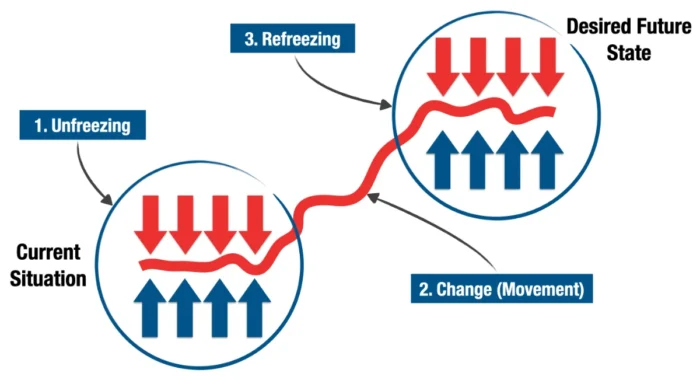
1. Unfreezing
According to Lewin’s change model, the first stage of the transformation journey is unfreezing. The current situation characterizes the need for organizational changes, so the balance between the driving forces for change and the forces of resistance is in equilibrium.
The unfreezing stage is when the balance between driving and resisting forces should be unbalanced in favor of the driving forces. This actually represents an unfreezing of the current behavior pattern.
Here, the need for change should be highlighted by increasing the feeling of dissatisfaction with the current situation. If everyone feels the urgency for the change at this stage, the organizational members are more likely to accept it.
This phase, in large part, contains:
- Creating awareness of the need for change
- Preparing the organization for the upcoming transition
- Breaking down the existing status quo
- Overcoming resistance to change
As Lewin suggests, we must first break down the old way before we can build a new one.
So, the first question is how to break down the old way.
The first thing is to ensure strong leadership for the change process. Leadership plays a crucial role in Lewin’s organizational change model because the change leaders must:
- Recognize the need for change.
- Create a sense of urgency for the change process.
- Share the change vision.
- Explain the benefits that will be achieved due to the change process.
- Ensure that all team members and employees understand why the change is necessary.
Related: The Team Effectiveness and Different Roles in Teams That Win
One of the most challenging parts of initiating change is often overcoming the comfort of the status quo and already installed current habits that must be changed. So, the unfreezing stage is integral to this process, preparing key stakeholders, including all employees, for transformation.
The next important thing at this stage is overcoming resistance to change, the most common human response, often driven by fear and uncertainty. My research has found that 28 different causes will impact the resistance, so overcoming this inertia must be done at this stage, and it will require:
- Clear communication strategies that define the need for change
- Employee involvement from all levels to encourage buy-in
- Leadership and stakeholder influence to facilitate change.
2. Changing (Moving)
Now is the right time to do the work. At this stage of the model, the organization will implement a new initiative, organizational structure, or processes and develop a new model of values, attitudes, and behavior. Once the need for change is recognized and a sense of urgency for change is developed (unfreezing), the system is no longer in equilibrium between forces. Then, individuals, groups, and the whole organization should become part of the change process. This means that the organization goes through the change implementation process, disrupting the status quo and adopting new ways of doing things.
As the organization goes through the change stage, it’s essential to maintain a continuous flow of communication, organize change management workshops, and plan for visible early wins to keep the momentum going and effectively manage change.
A successful change process will depend on employees’ engagement and support. So, transparency, active listening, empathy, and involving employees in decision-making are key to managing concerns and fostering a positive change environment.
Also, honestly and promptly addressing employee concerns can help build trust, reduce resistance, and ensure that everyone is on the same page, improving the change process’s overall effectiveness. Implementing stress management techniques can also support this process.
3. Refreezing
Refreezing is a third step of the process in which new behaviors become anchored in the organization. As the change process is carried out, it is necessary to standardize the new behaviors and instill them in the individuals. Then, the system is again in equilibrium between driving and resistance forces.
Simply put, this final stage must stabilize the new change by anchoring it within the organizational culture, which is the hardest part. It solidifies the change as the new status quo, making it resistant to the older habits and systems that have been left behind. Here you must ensure that roles and responsibilities are clarified, and the new ways of working are integrated into employees’ everyday routines and practices.
To maintain momentum after the change is crucial to ensure its longevity. So, establishing feedback systems, monitoring KPIs, and tracking stakeholder and employee satisfaction are some of the ways to measure the success of the change initiative. Remember that regular evaluation can identify some possible improvement areas, ensuring continuous improvement and the sustainability of the change.
How can you ensure the longevity of change as a part of the refreezing stage? Here are some steps you can conduct as a change leader:
- You must find ways how to successfully integrate the changes into the company’s culture and policies,
- Always recognize and give credit for each individual and team’s contributions to the change effort and
- Address all possible barriers to sustaining change.
Celebrating successes and showing appreciation for employees’ adaptability can increase employee engagement and set a positive foundation for future organizational changes.
Challenges and Considerations in Applying Lewin’s Model
While many praise Lewin’s model for its sensibility and structured approach, it is also important to explore its limitations and potential drawbacks.
The model’s biggest criticism is its linear nature, which can be considered too simplistic for the complexities of actual change processes. Like everything in business and management, organizational change is often non-linear, and different factors can disrupt the ordered progression through the three stages.
Also, change initiatives can sometimes generate unintentional consequences and outcomes, and the rigidity of the refreezing stage could restrict an organization’s agility to adapt to these new circumstances.
However, despite these criticisms, the model’s value lies in its ability to provide a clear roadmap for change and flexibility in adapting to any change management strategy. So, as a starting point for a change initiative, the model is the best solution, but at a later stage, adjustments and mixing of some steps from other models are needed as the organization goes through the change process.
Importance of Leadership for Implementing Lewin’s Change Model Successfully
Leaders must champion change, evangelize the vision of transformation, and lead by example. Effective, open, transparent, and continuous communication is crucial here, as it encourages awareness of change and encourages input and dialogue from all organizational levels. Without communication, the change process can easily go wrong, as is the case with many change initiatives.
Leaders must communicate a compelling vision for the future and the strategic change plan effectively to ensure an understanding of why change is necessary right now. This will help to balance driving and restraining forces, prevent resistance, and foster engagement.
Leadership support to manage change is also pivotal in achieving successful outcomes at each stage of Lewin’s change model. Leaders guide the organization through the unfreezing, transitioning, and refreezing phases, and in such a way, they reduce resistance and simplify acceptance of new practices.
The role of leadership in a changing context involves assessment of the current situation, development of a change strategy and plan, and effectively influencing key stakeholders and employees to welcome those new directions.
They must lead by example and act as change agents within the organization. By aligning employee activities with the strategic vision and promoting an environment facilitative to change, they can ensure the successful implementation of change initiatives.
Transformational leadership, characterized by charisma, inspiration, and individualized consideration, is especially effective during the radical or transformational change stage because this type of leadership encourages stakeholder support and reduces resistance.
Case Study of Organization That Successfully Utilized Lewin’s Change Model
I have worked with a wholesaler as a consultant to help them start the digital transformation process. We have leveraged Lewin’s organizational change model to guide their efforts. We selected this model because I have seen many strong resistance forces to such a transformation. The employees weren’t tech-savvy, so they resisted even thinking that everything would be digitized.
However, after a year of hard work, the company transitioned to digital processes, workflows, and applications, requiring employees to change their behavior and develop new skills. The transformation resulted in a cultural shift, with the organization adopting the changes in the digital environment.
After this success, today has passed almost ten years. Before a month, I got a call from the company’s owner and CEO asking me to work with them on developing a new strategy that would maintain their current growth rate based on the success we had achieved implementing the change process ten years ago.
This case study demonstrates the applicability of Lewin’s change model in guiding a major digital transformation.
Conclusion
As you can see, Lewin’s organizational change management model remains a significant principle for organizational development and transformation. Its simplicity and clarity make it enduringly appealing and a foundational framework for navigating change within complex organizational structures.

